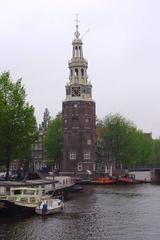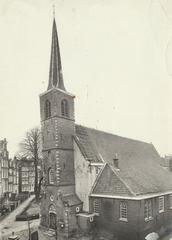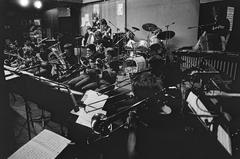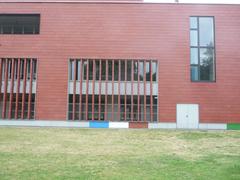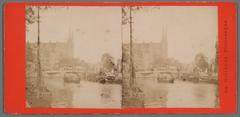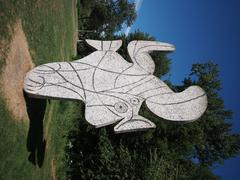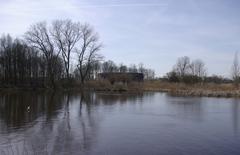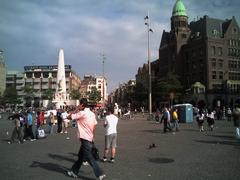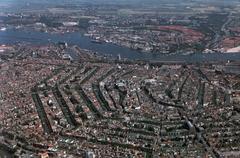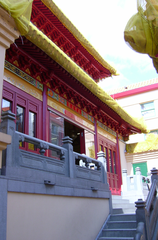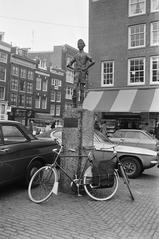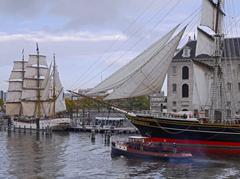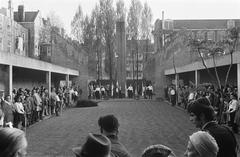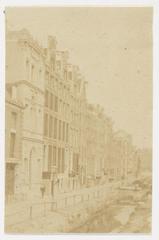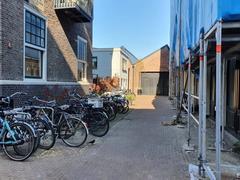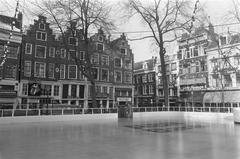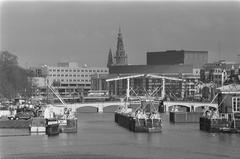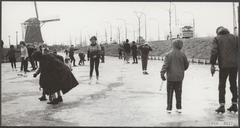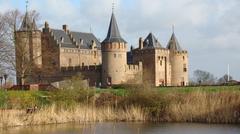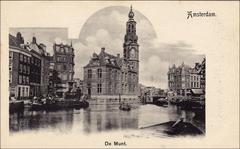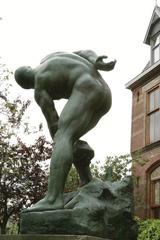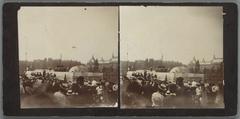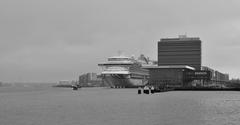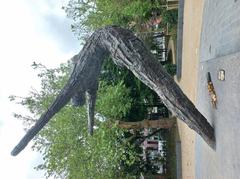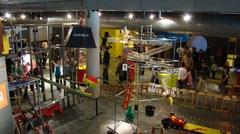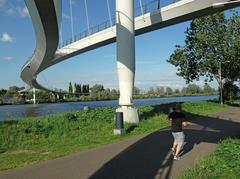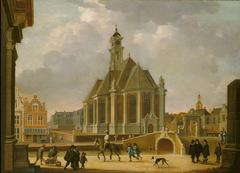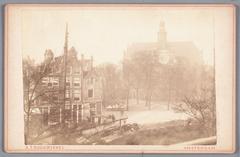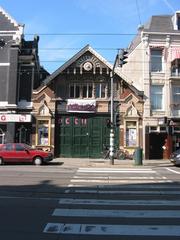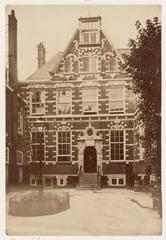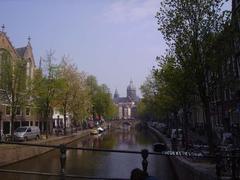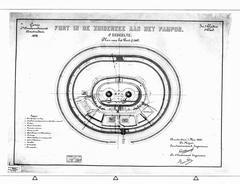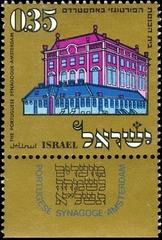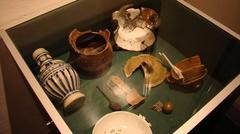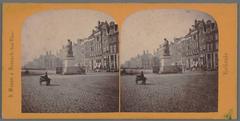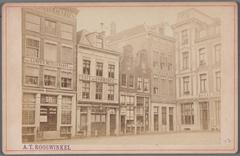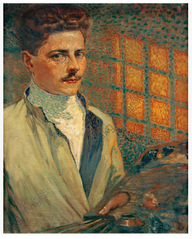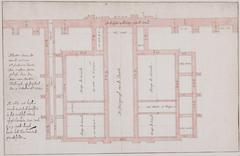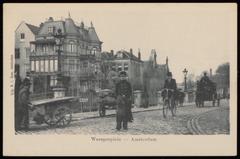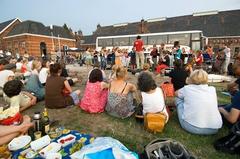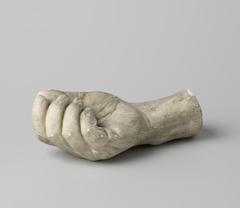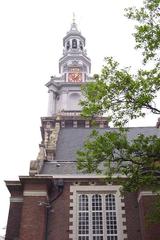
Visiting Montelbaanstoren: Hours, Tickets, and Nearby Historical Sites in Amsterdam
Date: 23/07/2024
Introduction
Montelbaanstoren, an iconic tower located in the heart of Amsterdam, offers visitors a unique opportunity to delve into the city’s rich history and architectural heritage. Originally constructed in 1516 as a key component of Amsterdam’s defensive fortifications, Montelbaanstoren has witnessed significant historical events and transformations over the centuries. Its strategic location along the Oudeschans canal made it an essential lookout point to protect the city from potential invasions and to monitor maritime activities. The tower underwent major renovations in 1606 under the direction of renowned architect Hendrick de Keyser, who added an ornate wooden spire, giving Montelbaanstoren its distinctive appearance. This transformation marked the tower’s shift from a purely defensive role to a symbol of Amsterdam’s growing prosperity and cultural development during the Dutch Golden Age. (source)
Today, Montelbaanstoren stands as a testament to Amsterdam’s resilience and enduring legacy, drawing tourists and locals alike to explore its historical and architectural significance. This comprehensive guide provides essential information for visitors, including Montelbaanstoren’s history, visiting hours, ticket prices, and travel tips. Discover why this landmark continues to captivate those who seek to understand Amsterdam’s past and appreciate its cultural contributions. (source)
Table of Contents
- [Introduction](#introductionintroduction)
- [History of Montelbaanstoren](#history-of-montelbaanstorenhistory-of-montelbaanstoren)
- [Origins and Construction](#origins-and-constructionorigins-and-construction)
- [Architectural Evolution](#architectural-evolutionarchitectural-evolution)
- [Role in Amsterdam’s Defense](#role-in-amsterdams-defenserole-in-amsterdams-defense)
- [Symbol of Maritime Heritage](#symbol-of-maritime-heritagesymbol-of-maritime-heritage)
- [Decline and Restoration](#decline-and-restorationdecline-and-restoration)
- [Modern Significance](#modern-significancemodern-significance)
- [Cultural Impact and Representation](#cultural-impact-and-representationcultural-impact-and-representation)
- [Preservation Efforts](#preservation-effortspreservation-efforts)
- [Visitor Information](#visitor-informationvisitor-information)
- [Visiting Hours](#visiting-hoursvisiting-hours)
- [Ticket Prices](#ticket-pricesticket-prices)
- [Guided Tours](#guided-toursguided-tours)
- [Special Events](#special-eventsspecial-events)
- [Accessibility](#accessibilityaccessibility)
- [Nearby Attractions and Travel Tips](#nearby-attractions-and-travel-tipsnearby-attractions-and-travel-tips)
- [Scenic Canal Cruises](#scenic-canal-cruisesscenic-canal-cruises)
- [Historic Buildings](#historic-buildingshistoric-buildings)
- [Vibrant Markets](#vibrant-marketsvibrant-markets)
- [FAQ](#faqfaq)
- [What are Montelbaanstoren’s visiting hours?](#what-are-montelbaanstorens-visiting-hourswhat-are-montelbaanstorens-visiting-hours)
- [How much do tickets to Montelbaanstoren cost?](#how-much-do-tickets-to-montelbaanstoren-costhow-much-do-tickets-to-montelbaanstoren-cost)
- [Are guided tours available at Montelbaanstoren?](#are-guided-tours-available-at-montelbaanstorenare-guided-tours-available-at-montelbaanstoren)
- [Is Montelbaanstoren accessible to visitors with disabilities?](#is-montelbaanstoren-accessible-to-visitors-with-disabilitiesis-montelbaanstoren-accessible-to-visitors-with-disabilities)
- [Conclusion](#conclusionconclusion)
History of Montelbaanstoren
Origins and Construction
Montelbaanstoren, a historic tower in Amsterdam, was originally constructed in 1516 as part of the city’s defensive fortifications. The tower was strategically positioned along the Oudeschans canal to protect the city from potential invasions and to monitor maritime activities. The initial design was purely functional, with a simple, unadorned structure typical of military architecture of the period.
Architectural Evolution
In 1606, the tower underwent significant renovations under the direction of architect Hendrick de Keyser. This transformation included the addition of an ornate wooden spire, which gave Montelbaanstoren its distinctive appearance. The spire was designed in the Dutch Renaissance style, characterized by its decorative elements and intricate detailing. This renovation marked a shift from the tower’s purely defensive role to a more symbolic and aesthetic function, reflecting Amsterdam’s growing prosperity and cultural development during the Dutch Golden Age.
Role in Amsterdam’s Defense
Throughout the 16th and 17th centuries, Montelbaanstoren played a crucial role in Amsterdam’s defense system. The tower was equipped with cannons and served as a lookout point for spotting enemy ships. Its strategic location along the canal allowed for effective monitoring and control of maritime traffic, which was vital for the city’s security and economic interests. The tower’s defensive capabilities were tested during various conflicts, including the Eighty Years’ War (1568-1648), when the Dutch fought for independence from Spanish rule.
Symbol of Maritime Heritage
As Amsterdam evolved into a major maritime power, Montelbaanstoren became a symbol of the city’s rich nautical heritage. The tower’s prominent position along the Oudeschans canal made it a recognizable landmark for sailors and traders entering the city. It served as a navigational aid, guiding ships safely into the bustling harbor. The tower’s association with Amsterdam’s maritime history is further underscored by its depiction in numerous artworks and maps from the period, highlighting its significance in the city’s cultural and economic life.
Decline and Restoration
By the 19th century, Montelbaanstoren had fallen into disrepair, reflecting the broader decline of Amsterdam’s maritime dominance. The tower’s wooden spire was removed in 1829 due to structural instability, and the building was repurposed for various municipal functions. However, the tower’s historical and architectural value was recognized, leading to several restoration efforts in the 20th century. In 1914, the spire was reconstructed based on de Keyser’s original design, restoring the tower’s iconic silhouette. Further restoration work in the 1960s and 1980s ensured the preservation of the tower’s structural integrity and historical features.
Modern Significance
Today, Montelbaanstoren stands as a testament to Amsterdam’s rich history and architectural heritage. The tower is a popular tourist attraction, offering visitors a glimpse into the city’s past and its evolution from a fortified medieval settlement to a thriving maritime hub. The surrounding area, with its picturesque canals and historic buildings, provides a scenic backdrop for exploring Amsterdam’s cultural and historical landmarks. Montelbaanstoren’s enduring presence in the city’s landscape underscores its significance as a symbol of Amsterdam’s resilience and enduring legacy.
Cultural Impact and Representation
Montelbaanstoren has been immortalized in various forms of art and literature, reflecting its cultural impact on Amsterdam’s identity. The tower is featured in several paintings by renowned Dutch artists, including Rembrandt and Jan van der Heyden, who captured its distinctive silhouette and its role in the city’s bustling waterfront. These artistic representations highlight the tower’s importance as a cultural and historical icon, symbolizing Amsterdam’s maritime heritage and architectural ingenuity.
Preservation Efforts
The preservation of Montelbaanstoren has been a collaborative effort involving various stakeholders, including the city government, heritage organizations, and local communities. These efforts have focused on maintaining the tower’s structural integrity, restoring its historical features, and promoting its cultural significance. The tower’s inclusion in guided tours and educational programs has helped raise awareness about its historical importance and the need for ongoing preservation. The successful restoration and maintenance of Montelbaanstoren serve as a model for preserving other historical landmarks in Amsterdam and beyond.
Visitor Information
Visiting Hours
Montelbaanstoren is open to visitors from Monday to Saturday, 10:00 AM to 5:00 PM. It is closed on Sundays and public holidays. It is advisable to check the official website for any changes in the schedule.
Ticket Prices
Ticket prices for Montelbaanstoren are as follows:
- Adults: €10
- Students and Seniors: €7
- Children (under 12): Free
Guided Tours
Guided tours are available and offer an in-depth exploration of Montelbaanstoren’s history and architecture. Tours are conducted in English and Dutch and can be booked in advance through the official website.
Special Events
Montelbaanstoren hosts a variety of special events throughout the year, including historical reenactments, art exhibitions, and cultural festivals. Check the official website for a calendar of upcoming events.
Accessibility
The tower is partially accessible to visitors with mobility impairments. While the ground floor is wheelchair accessible, the upper levels can only be reached via stairs. It is recommended to contact the venue in advance for specific accessibility needs.
Nearby Attractions and Travel Tips
Scenic Canal Cruises
Explore Amsterdam’s picturesque canals with a scenic cruise that often includes a stop at Montelbaanstoren. These cruises offer unique views of the city’s historic buildings and landmarks.
Historic Buildings
The area around Montelbaanstoren is rich in historical architecture. Notable nearby buildings include the Zuiderkerk and the Rembrandt House Museum, both of which offer further insights into Amsterdam’s cultural heritage.
Vibrant Markets
Visit the nearby Waterlooplein Market, one of Amsterdam’s oldest and most famous flea markets, for a taste of local life and unique shopping opportunities.
FAQ
What are Montelbaanstoren’s visiting hours?
Montelbaanstoren is open from Monday to Saturday, 10:00 AM to 5:00 PM. It is closed on Sundays and public holidays.
How much do tickets to Montelbaanstoren cost?
Tickets are €10 for adults, €7 for students and seniors, and free for children under 12.
Are guided tours available at Montelbaanstoren?
Yes, guided tours are available in English and Dutch and can be booked in advance through the official website.
Is Montelbaanstoren accessible to visitors with disabilities?
The ground floor is wheelchair accessible, but the upper levels are only accessible via stairs. It is recommended to contact the venue in advance for specific accessibility needs.
Conclusion
Montelbaanstoren’s rich history and architectural significance make it a must-visit landmark for anyone interested in Amsterdam’s cultural heritage. The tower’s evolution from a defensive structure to a symbol of the city’s maritime prowess reflects the broader historical and cultural developments that have shaped Amsterdam over the centuries. Through ongoing preservation efforts and public engagement, Montelbaanstoren continues to inspire and educate visitors, ensuring its legacy endures for future generations. (source)
Whether you are exploring Amsterdam’s picturesque canals, visiting nearby historic buildings, or enjoying vibrant local markets, a visit to Montelbaanstoren offers a memorable and enriching experience. Make sure to check the official website for the latest updates on visiting hours, ticket prices, and upcoming events. (source)
References
- Official website of Montelbaanstoren Amsterdam.nl
- Visitor information from I Amsterdam IAmsterdam.com
- The National Maritime Museum HetScheepvaartMuseum.com
- NEMO Science Museum NEMOScienceMuseum.nl
